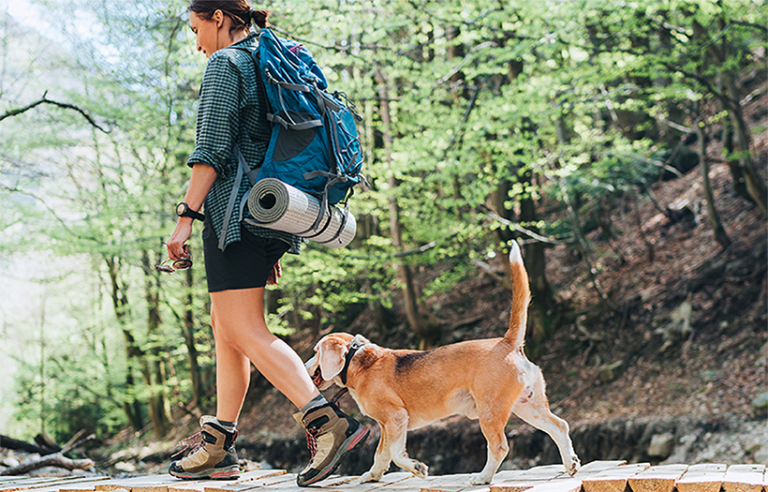
It’s necessary to prioritize your dog’s safety while enjoying summer hikes, as the warm weather creates an ideal environment for ticks and fleas. By taking proactive steps, you can ensure that your furry friend remains protected during outdoor adventures. This blog post will guide you through effective strategies, from preventive treatments to proper gear, so you can both enjoy your hikes without worrying about these pesky parasites.
Anticipating Tick and Flea Season: Timing is Everything
Planning your hikes around tick and flea activity can make a significant difference in your dog’s safety. Seasonal patterns dictate when these pests are most active, with warmer months typically seeing a spike. Paying attention to local reports about outbreaks and adjusting your hiking schedule accordingly can minimize your dog’s exposure to these harmful parasites. Start preparing in early spring, ensuring that preventive measures are in place before the peak tick and flea seasons begin.
Understanding Lifecycle and Seasonal Trends
The lifecycle of ticks and fleas involves several stages, including egg, larva, nymph, and adult. Understanding these stages helps identify when these pests are most prevalent. For example, ticks typically emerge as early as March, with peak populations during late spring and early summer. Fleas can breed quickly, with adults laying hundreds of eggs, meaning infestations can escalate rapidly in warm, humid environments. Knowing these trends allows you to be proactive in protecting your dog.
Identifying High-Risk Areas During Summer Hikes
Certain terrains pose higher risks for tick and flea exposure. Areas with dense vegetation, tall grass, and leaf litter are a haven for these pests, while trails away from the beaten path can further increase risk. Additionally, regions near water bodies or animal habitats might harbor a greater population of ticks and fleas. By choosing well-maintained trails and avoiding areas with thick underbrush, you can minimize the chances of your dog encountering these unwanted visitors during hikes.
When hiking with your dog, keep your eyes peeled for areas that may seem inviting but are potentially teeming with ticks and fleas. Party spots for these pests often include places where deer or wild animals roam, as they can carry ticks. After working through wooded paths or fields, perform a thorough inspection of your dog upon return, focusing on areas like the ears, underbelly, and between toes. This vigilance will help ensure that pests don’t hitch a ride home with you.
Essential Preventative Measures: Tackling Ticks and Fleas on Multiple Fronts
Implementing a comprehensive strategy to combat ticks and fleas will significantly bolster your dog’s protection during summer hikes. This approach combines pharmaceuticals, timely treatments, and strategic planning, ensuring you’re well-prepared to tackle these pests from various angles. By being proactive and utilizing a multifaceted plan, you can enjoy your outdoor adventures with peace of mind, knowing your furry friend is safeguarded from these unwanted intruders.
Effective Use of Preventative Treatments and Medications
Using veterinarian-approved flea and tick medications is vital for your dog’s protection. Products like topical treatments, oral medications, and flea collars should be applied according to your vet’s recommendations and instructions. Many of these treatments offer up to 30 days of protection, making it easier for you to keep up with the schedule. Regularly checking and updating these medications ensures that your dog has continuous defense against ticks and fleas.
The Role of Protective Gear: Pet Apparel and Accessories
Investing in protective gear, such as unique tick-repellent clothing and specialized collars, can provide an added layer of security for your dog. These items are designed to deter pests and reduce the chances of bites during your hikes. The choice of sturdy, breathable fabrics will not only keep your pet comfortable but also enhance prevention significantly.
When deciding on protective gear, look for items designed specifically to repel ticks and fleas. Lightweight jackets equipped with natural repellents can protect your dog’s fur while keeping them comfortable in warmer weather. Additionally, incorporating tick-repelling bandanas or caps can cover exposed skin, significantly reducing the risk of bites. The right gear complements medicinal treatments, creating a comprehensive defense system against these pesky parasites. Regularly inspect your dog’s apparel for signs of wear and tear to ensure its effectiveness, and consider brushing your pet’s coat before and after hikes to dislodge any hitchhikers that may have evaded these defenses.
Hiking Strategies for Risk Reduction: In-the-Field Tips
To maximize your dog’s safety from ticks and fleas during hikes, implement these strategies:- Stick to the center of the trail and avoid tall grasses and dense bushes.
- Take breaks in open, dry areas rather than in shaded or damp spots.
- Perform regular checks of your dog for any ticks or fleas during breaks.
- Use a tick repellent spray specifically designed for pets.
Choosing Safe Trails and Environments
Choosing hiking trails that favor open landscapes over wooded areas is vital for minimizing tick exposure. Trails that are well-maintained and frequently traveled often have less vegetation near the paths. Relying on local resources or online platforms to learn about potential tick activity in certain areas can help you select safe routes that prioritize your dog’s wellbeing.Keeping Your Dog Close: The Importance of Leashing
Keeping your dog leashed during hikes serves multiple purposes beyond just safety from ticks and fleas. A leash helps you maintain control, preventing your dog from wandering into high-risk areas where ticks might thrive. It also reduces the likelihood of your dog interacting with potentially infected wildlife, which could bring ticks back to your pet or home. Ensuring that your dog is leashed gives you peace of mind while exploring the great outdoors. By keeping your furry friend close, you can swiftly respond to any threats, such as aggressive wildlife or hazardous terrain. A securely fitted harness may add an extra layer of control, allowing you to enjoy your hike while keeping a watchful eye on your dog.Post-Hike Practices: Making Tick Checks a Routine
After every hiking adventure, integrate a thorough tick check into your routine. Dedicate time to inspect your dog from head to tail, focusing on areas like the ears, belly, between the toes, and under the collar where ticks are most commonly found. This quick yet crucial practice helps catch ticks before they can attach and transmit diseases. Consider setting a specific time for these checks, making them a part of your post-hike ritual to ensure consistency.
Comprehensive Body Checks and Grooming Techniques
Utilize a fine-toothed comb or your fingers to gently feel through your dog’s fur while conducting the tick check. Pay close attention to your dog’s skin; ticks often hide in folds or beneath matted fur. Regular grooming not only helps in detecting pests but also keeps your dog’s coat healthy, which can be beneficial since a well-groomed dog is less likely to attract ticks.
When to Seek Professional Help for Tick Removal
Visualize discovering a tick attached to your dog. If it is embedded deeply or you’re unsure about safe removal methods, consult a veterinarian. They can efficiently remove ticks and provide guidance on any necessary follow-up care. Engaging a professional is also wise if you notice unusual behavior in your dog, such as lethargy or unusual swelling after a tick bite, as these could be signs of a tick-borne illness requiring medical attention.
Seeking professional help for tick removal becomes crucial, especially if the tick has been attached for an extended period, which increases the risk of disease transmission. Vets possess the expertise to extract ticks safely without leaving parts behind, which could lead to infections. Additionally, your veterinarian can advise on preventive measures tailored to your dog’s needs, including vaccinations, topical treatments, and lifestyle adjustments to reduce the risk of tick infestations in the future.
Tactical Collaboration: Partnering with Your Veterinarian
Building a strong partnership with your veterinarian can significantly enhance your dog’s protection against ticks and fleas. Your vet can offer personalized advice on the most effective preventive measures suitable for your dog’s age, breed, and health status. This collaboration ensures that you keep ahead of any potential infestations with the appropriate products tailored specifically for your pet’s needs.
Discussing Customized Flea and Tick Prevention Plans
Engaging in a conversation about customized flea and tick prevention plans ensures you choose the best products for your dog. Vets can recommend topical treatments, oral medications, or collars based on your dog’s lifestyle and the specific environment you’ll be hiking in. Tailoring the prevention plan allows you to proactively combat these pests, ensuring your hikes remain enjoyable and tick-free.
Regular Health Assessments: Importance of Check-Ups
Regular health assessments play a vital role in maintaining your dog’s overall well-being and protecting against pests. Scheduled vet visits facilitate early detection of health issues and keep your pet on a consistent flea and tick prevention regimen. These check-ups not only monitor the effectiveness of your current flea and tick measures but also ensure your pup is in top shape for your outdoor adventures.
Frequent evaluations can reveal changes in your dog’s health that may impact their susceptibility to tick and flea infestations. For instance, underlying conditions may weaken their immune system, putting them at a higher risk for pest-borne diseases. By maintaining regular vet visits, you ensure that your furry friend is thriving and that your prevention strategies are effectively safeguarded against the threats posed by fleas and ticks, ultimately allowing for safer summer hikes together.
Final Words
Hence, ensuring your dog’s safety from ticks and fleas during summer hikes involves a combination of preventive measures. Keep your pet on preventive medications, choose the right gear such as tick-repellent clothing, and stick to well-maintained trails. Regularly check your dog for pests after hiking, and don’t hesitate to bathe or groom them to remove any intruders. By taking these steps, you can enjoy your outdoor adventures with peace of mind, knowing that you’re keeping your furry companion safe.







